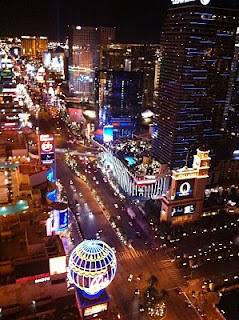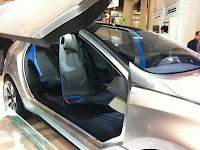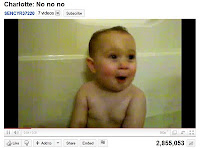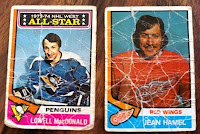Over the last 3 days, one of my clients asked me attend the Consumer Electronics Show in Las Vegas. This annual show, which is not open to the public, features more than 2700 companies showcasing their newest technologies and product lines. All of your favorite brands that develop or use technology were there- from automakers to kitchen appliance manufacturers, major television network to designer brands, software companies to university research teams, fitness equipment makers to sound system manufacturers … well you get the idea. The show is a nerd’s playground and a marketer’s dream.
 Keep Walking: How big is this show?
Keep Walking: How big is this show?I’ve been to a lot of trade shows and conventions before, but nothing comes close to the size of this one. The exhibitor space sprawls over 1.7 million square feet. That’s about the equivalent of 30 football fields (A typical football field including the two end zones is about 57,600 square feet) or 17 square city blocks (Engineers use a typical city block as 100,000 sq. ft. for calculation estimates, which is about 17 blocks per mile).

In Montreal terms, that takes you just about from about Guy street to St. Urbain - and Notre Dame to Dr. Penfield Avenue. In that space there are parks, apartment complexes, hotels, office buildings, and almost 2 complete university campuses. It's a big convention.
The Crowds came: AttendanceThis year close to 200,000 people attended the show. Teams of journalists and buyers crawled all over perusing the exhibits and new products. There is no shortage of show coverage on technologies – or the company announcements that major media cover from the show. For example, this year Ford unveiled its first electric car, Motorola introduced it Xoom tablet running Android 3.0. But, my perspective is always on the branding, promotion and products. I visited the lion's share of displays over 3 days to bring you the best of marketing of the show. And, while this was an extraordinarily fun task, it was by no means an easy one. Consider some of these options: I visited the Blackberry booth to play with the Playbook tablet and hung out with Adrian Grenier from Entourage. I blasted amplified guitars with no strings, took pictures with state of the art high-definiton 3D cameras (e.g. Kodak), heard the crispest audio sounds on million dollar theatre speakers, received private tours of wide screen 3D TVs (Panasonic, Sharp), got my picture drawn by one of the world’s most renowned cartoonists (Intel), played with new packaging, steered the car from the Green Hornet motion picture (Sony), demo'd the world’s largest 3D stadium screen (Samsung) and saw presentations from some of the best advertising creatives and special effects guys in the business (Polaroid, Canon). Indeed, it’s been an amazing time. So today, I’ll share my perspective on the best of the show.
 BEST MARKETING
BEST MARKETINGOf course sales are the true test of the impact of “best marketing”. But since that information is impossible to have, the criteria that I am using here is a mix of the following: 1. WOW factor; 2. How well the booth communicates the values of the brand; 3. Likability with the audience.
#1. The Canon Circus. (Japan)

There are so many “WOW” exhibition booths, but Canon was a cut above. The centerpiece of their presentation was an elaborate (and complete) jungle stage with a full 15 minute Cirque-de-Soleil style theatrical show. Acrobats dressed in wild animal prints bungeed up and down, flew above the crowd in butterfly costumes and dazzled in elaborate costuming. Midway through the show, a discreet photographer appeared (as part of the show) to capture the acrobat’s images on film which were then displayed in high definition on the large screens above. Check out
the video here for a 45 second video clip. The communication of the brand’s values and features were even clearer than the high resolution images taken by the photographer: Artistic creativity, stability of the camera, and vibrant color capture. Interestingly enough, Canon’s booth was located directly beside Polaroid’s booth, which also tries to own the “creativity” and “self expression” brand values (hence the Lady Gaga endorsement). At their booth Polaroid had famous ad execs present their works using Polaroid’s cameras, which is cool in its own right. But what would you rather see? Put it this way, I hung out at Polaroid for 10 minutes and Canon for 90.
#2. The future is Audi (Germany).

Even before stepping into the booth you get the brand’s messaging. Audi is the future. You enter into a sleek, spacious booth with an illuminating bright white display. The environment is exactly how movies depict the future. But here you feel the future. In the future things are just working out right. There’s harmony. There’s tranquility. There’s a carbon-fiber Audi R8. In the back, a dazzling (but somewhat discreet) presentation by a guy with a German accent (everyone wants a German engineer) who thoughtfully explains how the future of driving works. You’ll see how Audi has networked sensors to help the driver avoid red lights (saving you up to 15% in fuel costs) and traffic. You’ll hear how your wipers beam with other drivers for immediate weather reports from other drivers. The future looks illuminating. The future looks German. The future is Audi (I should really sell them that copy). I’ve never been a fan of Audi. Today I am a disciple.
#3 Visit Avatar with Nvidia.(USA)

This show had so many much emphasis on 3D technologies: Cameras, printers, video cameras, projectors and stadium screens. Each brand making seemed to blur into another one in this category. I’m definitely no guru on this and quite frankly near the end of the show I was getting nauseous watching 3D (which I understand is a common complaint for viewers of 3D TV), but one brand didn’t stand out here- it leap out. Nvidia makes video cards for graphics. They were showcasing their involvement with 3D and had characters from Avatar present. You could engage with the Avatarians in fake combat and have your photos taken with them. Of course, your photos (both 3D and 2D) are retrievable on the web. At this booth, the actors and actresses were tons of fun. But this brand linked to the masterpiece of 3D theatre- Avatar, giving the brand a lot of credibility in this space. For nerds, a functional thing that differentiated Nvidia was that their technology can take legacy computer games and present them in 3D. To the gamer that is really cool stuff.
#4. Check your heart iDesia (Isreal). It’s not fair to lump the small guys in with the firms that can spend millions of dollars on their convention presences. So, here I am going to recognize the best "small" booth. It's an Isreali brand that makes small sensor plates to extract and interpret heartbeats.

It turns out that this information is unique to each individual and can be used for 2 broad purposes. First, it can help individuals have a baseline of heart measures to monitor heart-related issues. Second, it can be very useful for secure bio log-ons. Read that sentence again. If you lost interest then you know how difficult it will be to attract attention of a targeted technology – in a small booth- in a sea of multi-million dollar booths. iDesia’s solution? They hired two pretty actresses to play iDesia nurses and take baseline heartbeats of volunteering (and adoring) males. You could then get a quick heartbeat evaluation which assessed your mood. (My readout said I was “happy”) Some might argue that the use of models in booths cliche, but when they are knowledgeable about the brand – and purposeful for communicating the brand’s values, sometimes it just works. The company's execution of its simple booth got it a nice color spread in the LA Times. At any rate, the iDesia brand was well linked to unique heartbeat and health in an appealing way to the overwhelmingly male audience.
#5 Ear, Eye, Skullcandy. (USA)

That takes us to my final "best of exhibit" marketing for the show. The headphone space is saturated but Skullcandy developed a high-octane energy, irrelevant, fun and youthful brand. Their technology may (or may not be) up to snuff but there booth emphasized the intangibles that makes the brand stand out. Centerpieces of this booth were Mike Bless, a live DJ spinning upbeat tracks (ear candy) and fun loving models energizing participants with fun interactive Plinko-type games (of course everyone won something). Once lured in by the energy, you could check out Skullcandy's portfolio. But, what made this exhibit so great is not the technology- but the intangible, hard-to-replicate energy and intangible associations that it linked to the brand. It was the rawest form of image marketing that you could find. You couldn't leave this exhibit without really liking the music of Mike Bless and the brand.
MOST HORRENDOUS MARKETING#1. Flush it by Yootechpro. At a minimum, firms spend tens of thousands of dollars for their presence at this

convention. These costs relate to space rental, staffing, flights, accommodations, design of the booth, printing of the booth, collateral, shipping of equipment etc. The purpose of course is to make sales, brand the build, get publicity, find potential business partners and (sometimes) find investors. There were a few exhibitors that really seemed to miss the point. Check out Yootechpros, maker of tablet accessories. Could someone please explain this to me? Someone at the company had the idea to stick a toilet in the center of the booth and display the Yootchpros product line on it. The message here : “Our product is crap and good enough to flush.” I’m sure this made a favorable impression on sales, partners and investors.
COOLEST PRODUCTSAnyone taken a marketing course will likely have gone though the 4Ps of marketing.

The first “P” is “product” and so here I’ll give my version of “coolest of” what’s coming. And, once again there is a deep well to draw from. Hyundai’s (Korea)hybrid concept car (currently branded as Nuvis) certainly deserves consideration for it style and spaciousness. Blackberry (Canada) unveiled its long awaited Playbook tablet with great fanfare and expense. Cobra (USA) showed its radar detector application for the iPhone. A credit card with a combination lock to prevent fraud was also attracting a lot of attention. All very cool new products...
#1. Bright Packaging. Packaging and distribution are among the lest sexy topics in marketing. But check this out.

Fulton Technologies (USA) gives us a glimpse of the future of a grocery store. Consider walking down the aisle to buy cereal and a box of Cheerios lights up. That’s right, through energy conducting shelving- and intelligent packaging, a regular box of Cheerios can light up to attract the attention of the shopper. (It will turn off as soon as you pick up the box) and you wouldn’t even notice any difference in the packaging.
Click here for the video. The applications of this go far beyond the example that Fulton demonstrated: dynamic pricing directly on the package, customized information for each shopper (SUGAR FREE could be advertised to a diabetic), customized couponing. Of course the tech could also be helpful on the reordering end. There are clearly a lot of promotional opportunities with this packaging but a lot of water has to go under the bridge before this becomes widespread in retailers. Retailers will have to reshelve their grocery aisles with expensive shelving, manufacturers will have to change their packaging operations which have been honed for decades for efficiency, consumers may resist may resist higher costs/electronic gadgetry/additional waste with this new option.
#2. Snake Camera. Courtesy of some clever graduate students at Carnegie Melon University, here is a remote-controlled snake camera that can climb trees and get into all sorts of tricky places.
Check out the video here. An obvious application for this item relates to search and rescue.
#3. Angry Mattel. (USA)

What do you get when you have an iPhone game that flutters around 10,000,000 downloads? You get the attention of a major toy company. Coming May 2011, Mattel (USA) Angry Birds (Finland). If you are familiar with the application, the game is self explanatory. C
heck out the demonstration here. In fact, this game is antithesis of high-tech, but its so cool that it needs to receive a reward!
CRAZIEST PRODUCT THAT JUST MIGHT SELL...
Once in a while you get a product that defies conventional wisdom and sells well. Think of the Snuggie or the SlapChop and you'll know what I mean. Here's a hat branded TV Hat that is designed for viewing NetFlix/media on an iPhone/Droid. Underneath the peek of the hat you'll can secure your iPhone (or other device) for nice distance viewing. Plus, the peek and sides of the hat keep it dark so you can watch your iPhone media in the brightest sunlight. I'll bet we will see this on an infomercial pretty soon.

 Branding the boring also relates to B-to-B brands. I recall lengthy discussions with one of my former clients in the mining space. Their issue: Branding their offering of a commodity. It is pretty hard to get customers excited about one type of mud vs. another- or one type of paper over another. Here too functional needs of the client and price dictate the purchase orders. It is a tough gig to brand bauxite, for example.
Branding the boring also relates to B-to-B brands. I recall lengthy discussions with one of my former clients in the mining space. Their issue: Branding their offering of a commodity. It is pretty hard to get customers excited about one type of mud vs. another- or one type of paper over another. Here too functional needs of the client and price dictate the purchase orders. It is a tough gig to brand bauxite, for example. There is also a double whammo for the branding of the boring too. Talent flocks to companies with the strongest brands. I often ask my students, “Let’s do a poll. Where would you rather work- L’oreal Cosmetics or Laporte Cosmetics? The response is usually about 9:1 for L’Oreal. The stronger brand carries weight for attracting talent, a problem that is all too well known for organizations competing in the boring.
There is also a double whammo for the branding of the boring too. Talent flocks to companies with the strongest brands. I often ask my students, “Let’s do a poll. Where would you rather work- L’oreal Cosmetics or Laporte Cosmetics? The response is usually about 9:1 for L’Oreal. The stronger brand carries weight for attracting talent, a problem that is all too well known for organizations competing in the boring.  Very recently, Duracell developed a campaign to excite its boring- and decided to endow Duracell with trust. It could have been marketed only along functional lines (ie how long it lasts.) So what does "trust mean"? When things really matter, when life and death is on the line, when you really care, Duracell is the brand you can rely on. It’s the brand that makes sure your smoke detector will go off to save your family in a fire. It is the brand that is committed to working for you when you need it. It is the brand that understands and cares. It's the loyal friend who won't let you down. This brand from one of the most boring categories of all (batteries) is all of a sudden a lot more exciting. These concepts apply equally well to commodities (think Juan Valdez and Columbian coffee or Chiquita Bananas) and some can be applied to business-to-business branding too. But developing the intangible link in categories that are functional/private – is tricky.
Very recently, Duracell developed a campaign to excite its boring- and decided to endow Duracell with trust. It could have been marketed only along functional lines (ie how long it lasts.) So what does "trust mean"? When things really matter, when life and death is on the line, when you really care, Duracell is the brand you can rely on. It’s the brand that makes sure your smoke detector will go off to save your family in a fire. It is the brand that is committed to working for you when you need it. It is the brand that understands and cares. It's the loyal friend who won't let you down. This brand from one of the most boring categories of all (batteries) is all of a sudden a lot more exciting. These concepts apply equally well to commodities (think Juan Valdez and Columbian coffee or Chiquita Bananas) and some can be applied to business-to-business branding too. But developing the intangible link in categories that are functional/private – is tricky.


















